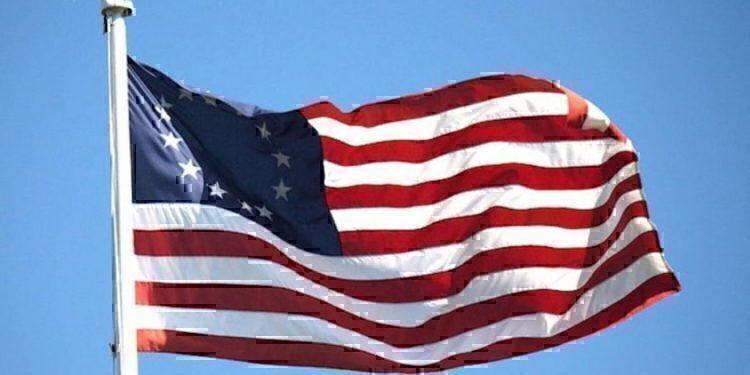The flag being deemed as offensive is often credited to Betsy Ross. She and her husband operated an upholstery shop in Philadelphia around the time of what became the American Revolution. Through a mix of fact and fiction, her sewing a pattern of 13 stars and 13 stripes has been “tightly woven into the colorful fabric of America’s rich history.” More recently, however, it has been adopted and displayed on occasion by the Ku Klux Klan, white supremacist groups, and nationalist organizations.
The Anti-Defamation League, which monitors symbols being regularly used by racist and hate movements, does not list the “Betsy Ross flag” in its extensive database. While that doesn’t mean it isn’t being used by such groups, the absence of the flag in the database indicates that the flag hasn’t been co-opted so broadly by hate-mongers. Nevertheless, this flag is suddenly stirring widespread debate. It has already paved the way for comparison of the Betsy Ross stars-and-stripes to a Nazi swastika and to online images of a Nike shoe fashioned from the colors and symbol associated with the flag of the Soviet Union.
Those types of words and images are worth paying some attention to in conversation about this controversy. But the real concern here is about context and framing.
Did Nike intend to unleash a racist symbol, only to be thwarted at the last minute? Is the Betsy Ross flag really a racist symbol? What other patriotic symbols should be banished to the dustbin of history or dubious marketing campaigns?
The sneakers that Nike designed and started to put to market are a legitimate product. Removing them from the market and otherwise boycotting them because they include an image that is remotely being hijacked by racists is a slippery slope. It puts into play the prospect that this could be done with most any product. If the Ross flag wasn’t a racist symbol before this July 4th, it certainly is one now.
Nike grew from a small business selling sneakers in the western United States into a fashion giant known even in the farthest reaches of the world. Company executives are usually aware and innovative enough to be even a step ahead in guiding its customers and the public in a new and good direction. But perhaps not this time. Besides baseball and apple pie, what could be more American than putting a historical image of the flag on a pair of shoes and selling it for a nice price and independence?
Read more at Forbes.com








